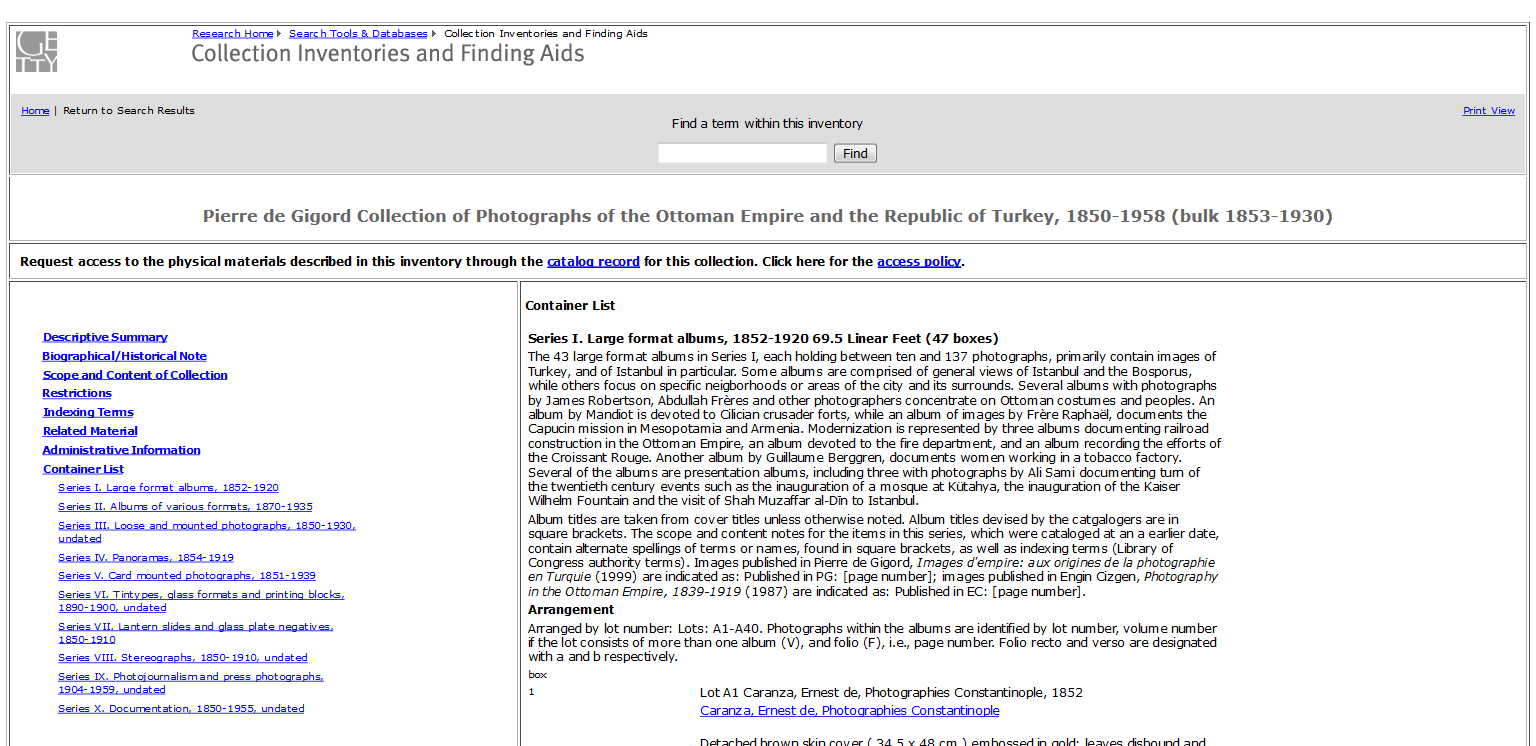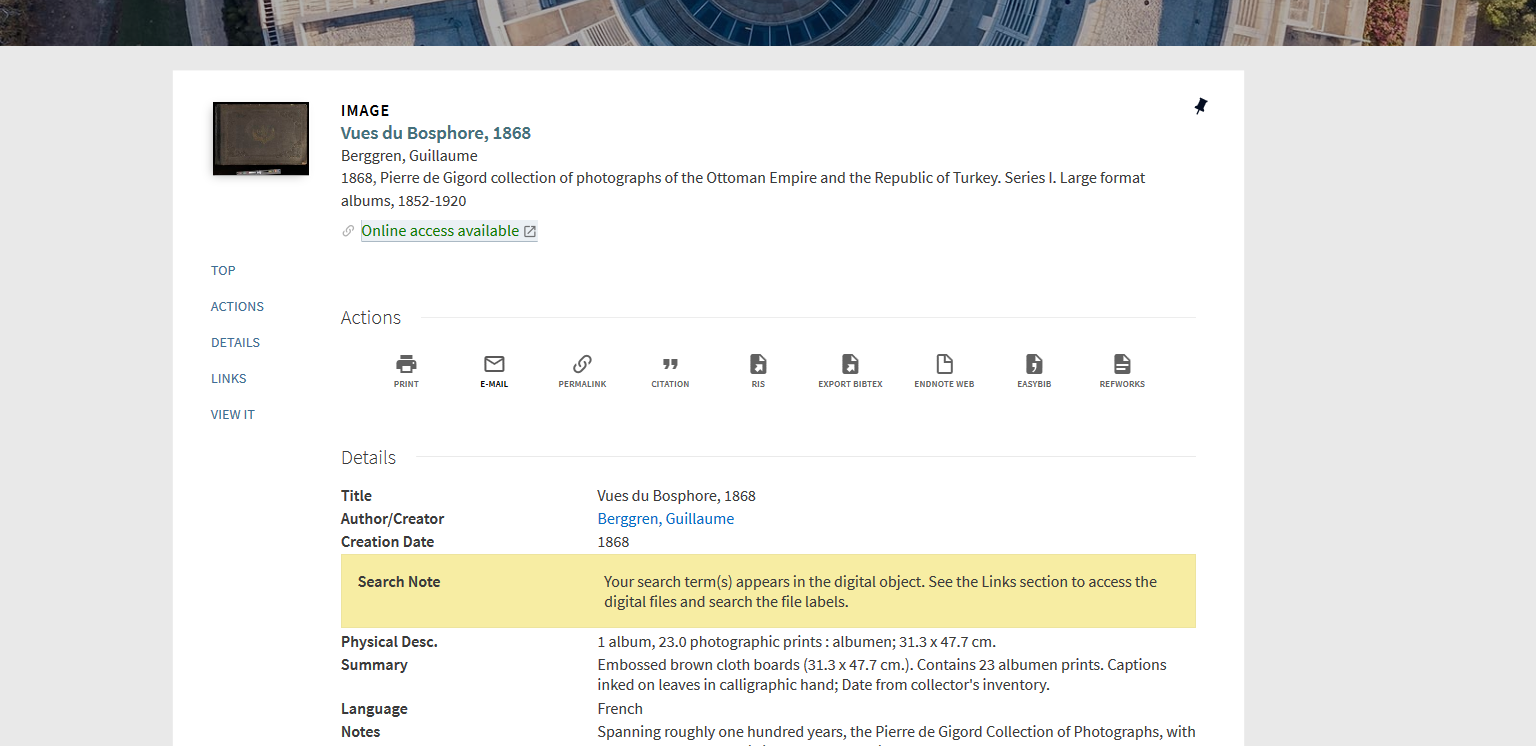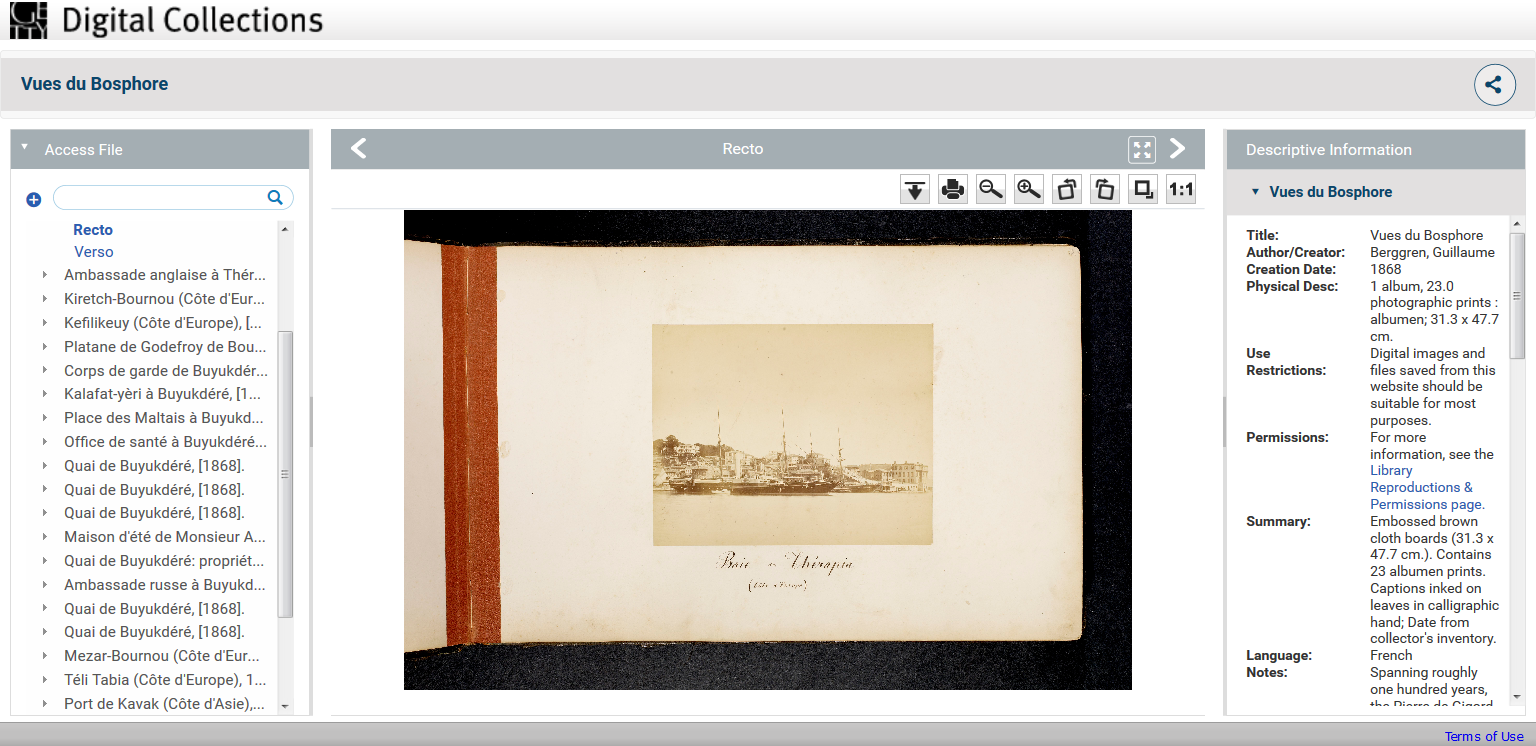The collection is arranged in 10 series:
- Series I. Large format albums, 1852-1920
- Series II. Albums of various formats, 1870-1935
- Series III. Loose and mounted photographs, 1850-1930, undated
- Series IV. Panoramas, 1854-1919
- Series V. Card mounted photographs, 1851-1939
- Series VI. Tintypes, glass formats and printing blocks, 1890-1900, undated
- Series VII. Lantern slides and glass plate negatives, 1850-1910
- Series VIII. Stereographs, 1850-1910, undated
- Series IX. Photojournalism and press photographs, 1904-1959, undated
- Series X. Documentation, 1850-1955, undated
Individual descriptive records (see below) are very detailed showing at first sight if the material is accessible online and allowing to link directly to the digital images. They can be printed, saved, shared and cited directly from the database (export to RIS format, Bibtex, Endnote, Easybib, and Refworks).
Albums can be browsed and images viewed in a custom-made reader displaying one page/one image in the middle column, a clickable list of pages/images on the left-hand side, and a summary of the descriptive record on the right-hand side. Images can be downloaded, printed, enlarged up to actual size and turned left or right.
As in any digital collection use restrictions apply. If the website states that “digital images and files saved from this website should be suitable for most purposes”, more information is available on the Library Reproductions & Permissions page.





